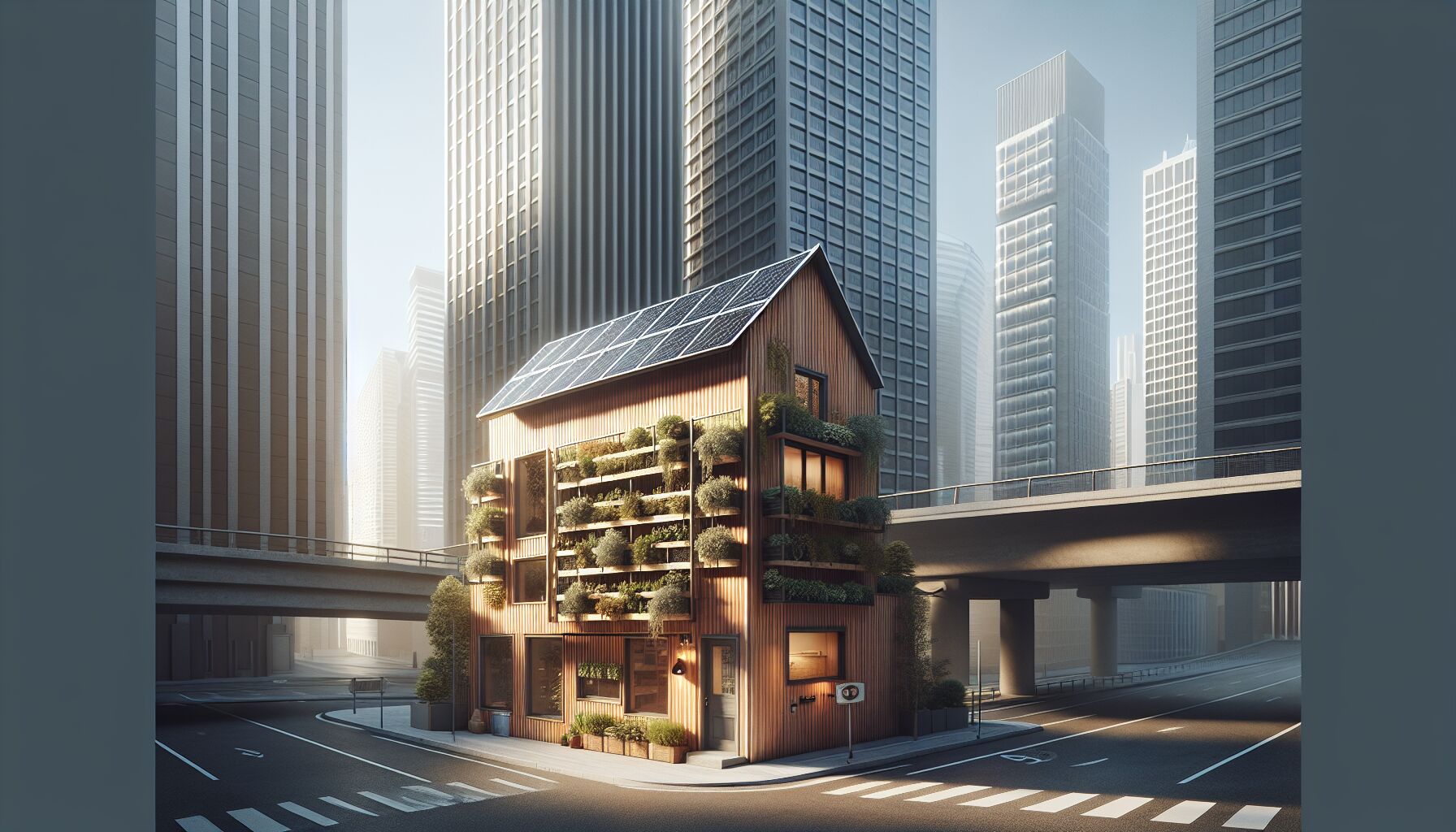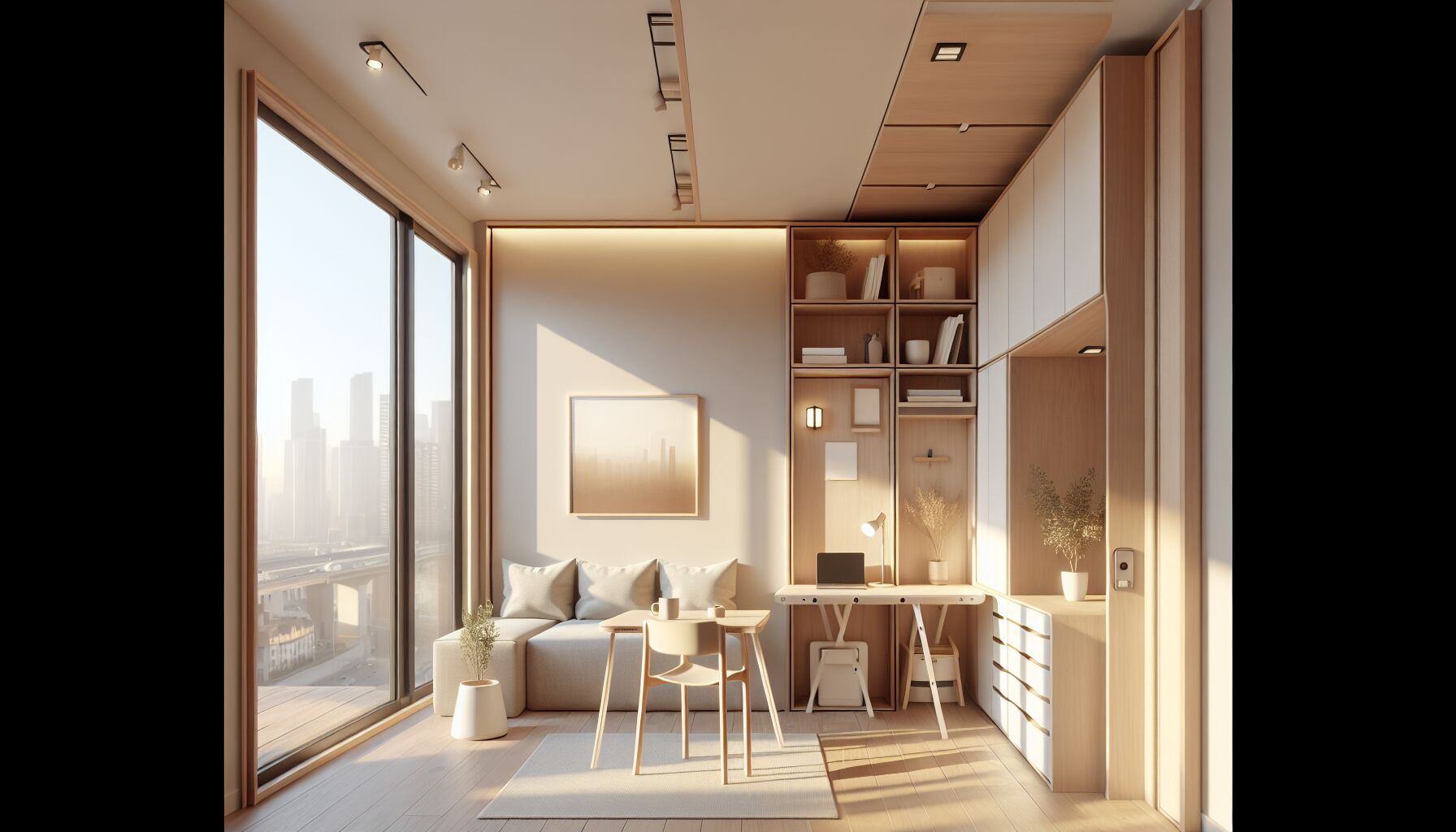 When you start living more consciously, the walls of conventional life start to look a little too thick. Especially in cities, where square footage often comes at the expense of presence, time, and peace, many are turning to tiny homes as a way to inhabit their truth more simply—and wisely.
When you start living more consciously, the walls of conventional life start to look a little too thick. Especially in cities, where square footage often comes at the expense of presence, time, and peace, many are turning to tiny homes as a way to inhabit their truth more simply—and wisely.
In the context of urban living, tiny homes offer more than just shelter. They provide a way to reclaim time and space, deepen self-reliance, and live more intentionally. The shift isn’t just about downsizing—it’s about right-sizing.
- Lower cost of living, without compromising essential comforts
- Closer connection to surrounding resources, services, and community
- Energy efficiency and lower environmental impact
Let’s ground it in some real numbers: the average one-bedroom apartment in U.S. cities rents between $1,500 and $3,500 per month, sometimes more. By contrast, many urban tiny homes sit on land owned, co-oped, or leased affordably, and come with utilities running a fraction of traditional homes—think $50–$150 monthly electricity bills, especially when they’re solar-equipped.
Living in a smaller space in the city places your life closer to the pulse. You’re often within walking or biking distance of farmer’s markets, cultural events, libraries, and healing centers—things that nourish the body, inspire the mind, and lift the spirit. Without a car note or constant repairs, many tiny home dwellers report saving upwards of $10,000 per year just by walking more and paying for less.
There’s also something deeply grounding about breaking away from the culture of excess. In a city environment rife with consumerism and distraction, tiny homes become an act of spiritual resistance. As minimalist advocate and urban tiny home owner Marcus Henley says:
“My tiny house isn’t just a box with a roof—it’s a container for intention. When you live small, you think big. There’s no space for noise, only clarity.”
From a design standpoint, urban tiny homes tend to be tailored for flexible use. A single area converts from office to meditation nook, from kitchen counter to herbal prep space. Building materials are often repurposed—from salvaged wood beams to upcycled windows—creating an aesthetic that’s both rustic and ingenious.
In many cases, folks use compact tools and systems that support independent living—composting toilets, greywater filtration setups, and vertical gardens to grow kitchen herbs year-round. These homes become mini ecosystems, rooted in both old traditions and modern resilience.
That’s the quiet beauty of downsizing in an urban environment: your home becomes a vessel, not a vault. There’s less upkeep and debt, and more time for craft, friendships, meditation, and real food. You learn that fulfillment isn’t tied to square footage—it’s tied to space for authenticity.
When the streets are loud, and the digital world louder, a tiny home in the city lets you create a soft perimeter. It becomes sacred ground—a little temple tucked within the machinery of modern life. Not isolated, but insulated. Not hidden, but held. And that might just be the most practical thing of all.
Challenges of downsizing in urban environments
It’s easy to romanticize the idea of downsizing—letting go of excess, living close to the earth, simplifying each breath and decision. But in urban environments, where the hum of concrete, cables, and culture never stops, the path isn’t always straightforward.
One of the first—and often overlooked—challenges of embracing tiny homes in cities is the zoning maze. Most urban areas are still operating under outdated building codes and housing policies that don’t yet recognize tiny homes as legitimate dwellings. Some cities require a minimum square footage that excludes most models from being categorized as legal residences. Others demand that tiny homes be tied to foundations or hooked up to municipal sewage, which can defeat the whole purpose for those wanting off-grid or moveable homes.
As Victoria Walsh, a housing policy researcher based in Portland, explains:
“A lot of cities love the idea of sustainable, minimalist housing on paper—but when it comes to changing the codes, it’s like turning a ship with a toothpick. The red tape doesn’t match the urgency people are feeling.”
This legal pressure pushes many urban tiny home dwellers into gray zones—living on borrowed backyards, construction lots, or hidden driveways. And while it builds community in creative ways, it also limits freedom. One resident in Oakland shared that she had to relocate her home three times in a year due to shifting enforcement from local officials. Not everyone has the time, energy, or resilience to keep moving their sanctuary.
Then there’s the pragmatic side of downsizing: getting rid of stuff. It sounds poetic until you’re actually faced with it.
- What do you do with heirloom furniture that won’t even fit through the front door?
- How do you adapt your hobbies—or your business—to just 200 square feet?
- Where do you store seasonal tools, camping gear, or even simple bulk food staples?
People moving from traditional homes or apartments often underestimate the emotional toll of releasing sentimental items. Unlike rural downsizing—where you might have a shed, barn loft, or generous porch for overflow items—urban living demands more surgical precision. There’s rarely extra space outside your footprint, so every item kept must earn its place.
And when it comes to lifestyle fit, not everyone finds the shift easy.
For families, tiny homes in cities can pose real schooling and social challenges. Urban districts might frown on addresses tied to movable dwellings, complicating enrollment. Teenagers need privacy. Partners want breathing room for disagreements and reconnections. Even something as simple as a shared morning routine—coffee, yoga, a shower—can feel tangled without enough elbow room.
There’s also a sensory reality to consider. Urban living, by nature, tends to be loud—sirens, neighbors, delivery trucks, nightlife. For those seeking peace, thin walls and tight quarters can amplify exterior noise. While advancements in soundproofing and insulation help, you’re still not getting the natural buffer of acreage, trees, or wild edges like you might in a countryside environment.
That said, many tiny-home dwellers find creative ways to buffer those edges. Thick curtains double as noise dampeners. Lavender oil and beeswax candles purify tight airspaces. Small indoor fountains provide the gentle white noise of flowing water. It’s the micro-rituals—like boiling herbs on the stovetop or tucking phone chargers into woven baskets—that transform the metallic hum of the city into something a little softer.
Let’s also talk about water. In traditional apartments, you rarely think about flow rate or pressure because it’s regulated across a broad system. In a tiny house—especially if you’re using portable or off-grid plumbing—insufficient city hookups or aged sewage lines can lead to frequent maintenance.
Some urban dwellers turn to systems like the Waterdrop Remineralization Filtration System to make city tap water usable in small tanks. But if water management isn’t handled thoughtfully—inflow and outflow both—it can lead to mold, backups, or even legal citations from the city.
And finally, let’s not pretend downsizing doesn’t spark loneliness for some. Traditional homes often frame your life in sociability—extra guest bedrooms, a yard, a sofa you can sink into during movie night. When you shrink your environment, you may also tighten your social rhythms. Visitors become more intentional, and sometimes less frequent. Without a common area that accommodates multiple people, some find urban isolation creeping in despite being surrounded by millions.
That’s why the spiritual aspect becomes essential. If your shelter shrinks, your inner world has to expand. Practices like meditation, prayer, journaling, or even simple heart-to-heart conversations become lifelines for staying rooted and connected. A tiny home doesn’t leave much room to run from yourself—or your housemates. Which, depending on your posture, can be a gift or a test.
Smart solutions for maximizing small spaces
 Smart living in small spaces isn’t just about organizing your socks in color-coded bins or installing a Murphy bed—it’s about tuning into a mindset where function speaks poetry, and every corner carries weight. Especially in the heart of the city, where square inches are traded like currency, designing a tiny home becomes an act of everyday alchemy.
Smart living in small spaces isn’t just about organizing your socks in color-coded bins or installing a Murphy bed—it’s about tuning into a mindset where function speaks poetry, and every corner carries weight. Especially in the heart of the city, where square inches are traded like currency, designing a tiny home becomes an act of everyday alchemy.
Let’s begin where most frustrations start: storage. In the realm of urban living, where floor plans often resemble jigsaw puzzles, intentional design is not just helpful—it’s sacred. Every item you keep should serve at least two purposes, and—where possible—fold, stack, hang, or tuck into itself. Consider low-profile ottomans that double as storage bins, or floating wall desks that close like a cabinet when not in use. Vertical real estate—those neglected upper walls—becomes prime terrain for shelves, hanging plants, rotating spice racks, and even overhead sleeping lofts.
Some city-dwellers are getting even more creative by using ceiling-mounted pulley systems to raise and lower tables and beds depending on the time of day. It’s kinetic design—space in motion. While that might sound ambitious, platforms like Living Big in a Tiny House showcase dozens of real-life setups where innovation is born not in theory, but in necessity.
Smart downsizing also means curating our belongings more consciously—not from a place of deprivation, but from discernment. Ask yourself: Do I need this item? Do I love it? Does it serve my lifestyle here and now?
- Modular cubes with slide-out compartments can house everything from winter gear to power tools—without sacrificing aesthetics
- Magnetic strips hold knives, keys, even herbs to dry, freeing up counter space
- Stackable ceramic bowls can store dry staples, eliminating the need for multiple mismatched containers
In cities where laundry access can be hit-or-miss, compact appliances like the Giantex Portable Washing Machine offer independence without taking up more than a shoebox’s worth of room. Likewise, investing in an efficient countertop induction burner or a collapsible dish rack can simplify your kitchen retreat.
The smallest places often demand the clearest energy. So, what makes a space truly feel open—even when it’s only 150 square feet? Light. Here’s where floor-to-ceiling windows, translucent partitions, and even well-placed mirrors can create a sense of expansion. Some tiny homes use flexible frosted wall panels to divide rooms when needed—say, during a private call or quiet meditation—but open back up when not. It’s a balance between privacy and permeability.
Color and texture also matter more in small spaces. Urban living doesn’t have to mean sterile or cramped. Natural woods, linen drapes, heirloom pottery, and fresh greenery breathe life into even the narrowest hallways. Consider using milky whites or soft sage tones on walls to open the room energetically, then threading in earth tones through furniture or custom rugs made from sustainable jute.
For those with spiritual practices, intention becomes design. A fold-down altar, an East-facing sitting cushion, or even a hand-carved incense shelf lends the space depth beyond its size. Purpose-built nooks remind us: this isn’t just shelter—it’s sanctified ground. As one tiny house resident in Chicago shared:
“I have a small drawer that’s only for my journals and prayer beads. Every morning starts there—no matter the chaos outside. This home keeps me close to myself.”
 DS Haven In Light Of Things
DS Haven In Light Of Things






